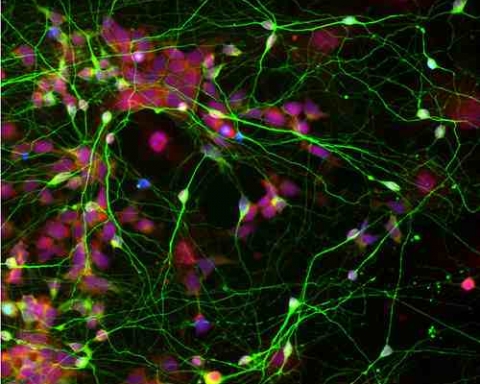This research is a review of the use and efficacy of functional neuroimaging in the evaluation and diagnosis of patients with schizophrenia and ways there can aid in the development of new therapeutic agents.
Neurotransmitters like dopamine and glutamate play an important role in the pathophysiology of schizophrenia. The mechanism by which these neurotransmitters are affected in schizophrenia can be assessed with imaging techniques such as positron emission tomography (PET), single photon emission tomography (SPET) and magnetic resonance spectroscopy (MRS).
Tyrosine is an amino acid and a substrate needed in the synthesis of dopamine. In the terminal vesicles of nerve cells, dopamine is secreted into the pre-synaptic membrane. It then binds to dopamine (D) receptors. In schizophrenia, dopamine production released at the terminal end plate is increases while dopamine (D2) receptors level is normal or may be slightly elevated. GABA is an inhibitory neurotransmitter produced by brain neurones. GABAergic neurons expressing NMDA receptors are functionally inactive in schizophrenia with a resultant reduction in the amount of GABA neurotransmitter released. This results in an increase neuronal activity with subsequent release of glutamine which acts on non-NMDA (AMPA) glutamine receptors. These abnormalities are investigated using functional Neuroimaging techniques.
[wp_ad_camp_4]With better understanding of neurotransmitters and with the evolution of better investigating techniques, brain receptor availability, enzyme activities and drug receptor interaction can be studied effectively. In PET and SPET, radiotracer is administered to the patient and the radioisotope then binds to a specific receptor in the brain. Positron and a single photon are emitted in PET and SPET respectively. The patient is positioned surrounding by radioisotope scanner which detects the photon leading to a construction of an image of the brain showing the distribution of the tracers. This indirectly shows the activities and presence of receptors and neurotransmitters in the brain.
Clozapine is the most effective antipsychotic drug used in the treatment of schizophrenia. It acts by stimulating D1, D2, muscarinic M1 and M4 receptors with an antagonistic effect on serotonin 5-HT2A receptors. Clozapine when administered shows a reduced level of striatal D2 drug-receptor binding which accounts for a lower incidence in extra-pyramidal side effect when compared to other antipsychotics.
Mutations in genes like DISC1, dysbindin and neuregulin are implicated in the aetiology of schizophrenia. Recent studies show that DISC1 influences hippocampal function while neuregulin has effects on the prefrontal activities. Newer treatment for schizophrenia can be designed to target the affected genes.
Patients with schizophrenia will benefit from the administration of more than one drug because of the extensive neurochemical, neurocognitive and neuropathology changes associated with this disorder. The use of multiple therapeutic will have a disease modifying effect.
Functional Neuroimaging technique is invaluable in the management of schizophrenia. There are helpful in establishing diagnosis in some cases of schizophrenia with additional benefits of predicting patients that may succumb to the disease in future and in the development of newer and more effective drugs.
However, because of the heterogeneous nature of this disorder, these imaging techniques may not be able in detecting all patients with the disease because of variability in symptom complex. Some disease conditions share similar symptoms with schizophrenia and all schizophrenic patients do not exhibit similar symptoms.
As such, more research is needed in the development of newer imaging technique that is specific and sensitive to the neurochemical changes in the brain associated with schizophrenia. Also, the research should not be limited to dopamine only but to other neurotransmitters especially those involved in glutamine pathway. This will in understanding the pathophysiology of the disease and in the development of newer and more effective drugs.
You have just read a summary of the research paper: McGuire, Philip, et al. “Functional neuroimaging in schizophrenia: diagnosis and drug discovery.” Trends in pharmacological sciences 29.2 (2008): 91-98.






